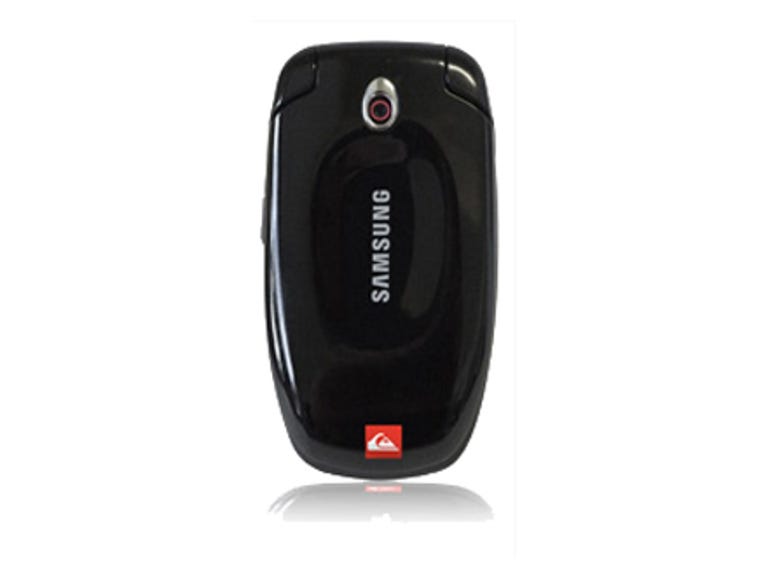 Why You Can Trust CNET
Why You Can Trust CNET Quicksilver Phone (Samsung SGH-C520) review: Quicksilver Phone (Samsung SGH-C520)
The Quicksilver Phone by Boost Mobile is a skinned version of the Samsung SGH-C520 but it's hampered by a frustrating interface and poor call quality.
Design
The Quicksilver Phone is part of a new range of youth-orientated phones released by Boost -- all based on the Samsung 520. This also includes models called "Charmed" -- which includes a bunch of charms, natch -- and "Roxy", which is based on another surf-wear company for girls.
The Good
The Bad
The Bottom Line
The Quicksilver version is black. Piano black. Do manufacturers make any other finish nowadays? But seriously, does anyone want a phone that marks this easily -- in their pocket of all places? Full of scratchy scratchy and finger-printy printy.
It's a clamshell phone, and quite small in comparison to other budget models. The red, seagull eye-like camera is striking and contributes to the phone's elegant exterior.
Inside, the keypad is quite compact, though there seem to be way too many navigation buttons.
Features
As you'd expect from a phone that costs under AU$100, the feature count is fairly limited. You do, however, get an FM radio which at least gives you access to free music.
The screen is all that you can expect from a cheap phone, with a 128 x 160 resolution and 65k colour depth. It's reasonably clear, though trying to view WAP pages becomes quickly tiring.
The menu is relatively straightforward, though access to higher-end features such as a Timer are obviously missing.
Remember WAP? Yes, 10-year-old WAP access is also a highlight of this phone, according to its specs list. Java games are also supported but the phone's limited 600KB memory won't hold many -- if any.
Umm, that's about it for features. You get mega-grouse Quicksilver wallpapers though.
Performance
So what kind of performance can you expect for your hundred sheckles? Well, as you've probably looked over the Good and Bad above you'll gather that it isn't much.
It's not that this phone has terrible battery life -- about four days with moderate use -- but one thing we did find is that call quality was generally OK to poor. Dropouts and crackling were regular occurrences, and were not usually related to signal strength.
But it's not just the call quality that was the problem -- the interface just isn't intuitive for users used to Nokia or even Sony Ericsson phones. And this starts with something as simple as entering a number into the phonebook. Entering a new contact is confusing -- once you've input the name and pressed OK it comes up with a list of existing names near, but not including, the one you've input. What are we supposed to do here? Confused, we pressed OK and nothing terrible happened, but this is indicative of how counterintuitive this phone can be.
Most frustrating of all is that you can't message a contact once you've selected their name from the Phone Book -- you need to choose the messaging application from the menu first. With text arguably more popular than chat -- especially with younger users -- this is a major oversight.
As with the rest of the phone, the radio doesn't offer the most intuitive or rewarding experience. Though the phone has a keypad you can't use it to directly input the frequency you want. You need to hold down the left or right cursor keys and let it cycle 0.10 MHz (a second) at a time.
Reception for independent station FBI was hit-and-miss depending on which direction you faced the phone, but the stronger-signalled commercial stations fared better. Sound, though, is decent for a cheap headset and phone combo, though the earplugs are uncomfortably large.
As a phone for kids the Quicksilver phone is just OK. A younger person would be less troubled by the phone's eccentricities and just deal with it. However, its frustrating limitations would be a deal-breaker for most.


